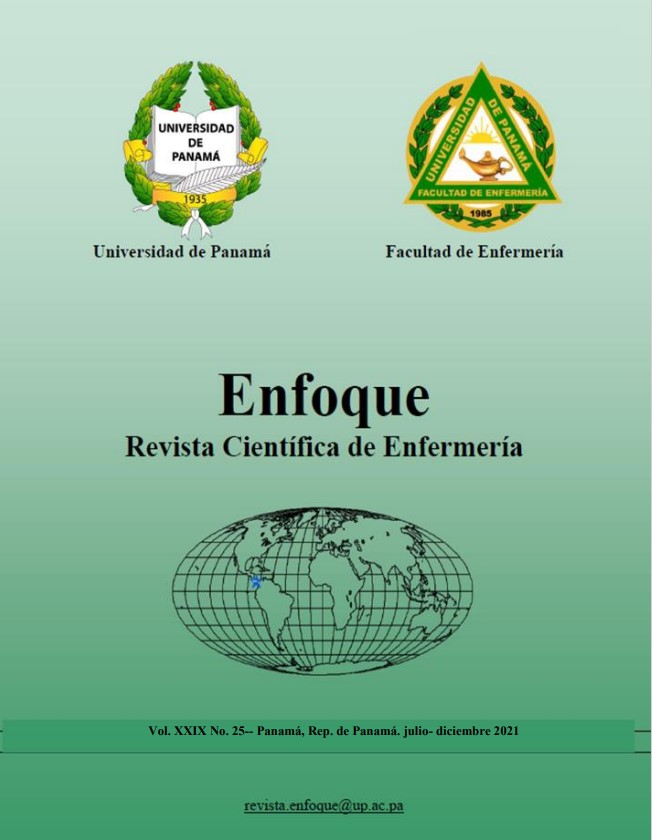Citas
Aliasghar, D.A. (2017). Imaging Characteristics of Triple Receptor Negative versus Triple Receptor Positive Breast Cancer. International Journal of Science and Research (IJSR), 6(8), 322-328. https:// doi.org/10.21275/ART20175923
Althuis, M. D., Brogan, D. D., Coates, R. J., Daling, J. R., Gammon, M. D., Malone, K. E., Brinton, L.A. (2003). Breast cancers among very young premenopausal women (United States). Cancer Causes and Control, 14, 151–160. https:// doi.org/10.1023/A:1023006000760
Alwan, A., Armstrong, T., Bettcher, D., Branca, F., Chisholm, D., Ezzati, M., Wild, C.
(2011). Global status report on noncommunicable diseases. Geneva, World Health Organization. http://www.who.int/nmh/publications/ncd_report_full_en.pdf
Aronson, L., Beaulieu, N., Bloom, E., Bloom, L., Cafiero, E., Ferlay, J., Harhay, M., Stein, R. (2009). Breakaway: the Global Burden of Cancer Challenges and Opportunities, Economist Intelligence Unit Limited the Economist. pp. 1-73.
Barr, R.D., Feeny, D., Furlong, W.: Economic evaluation of treatments for cancer in childhood. European Journal of Cancer 40, 1335–45 2004. https://doi.org/10.1016/j.ejca.2004.01.033.
Basro, S., & Apffelstaedt, A. J. (2010). Breast cancer in young women in a limited-resource
environment. World Journal of Surgery, 34, 1427–1433. https://doi.org/10.1007/s00268-009-0299-5
Bleichrodt, H. (1996). Applications of utility theory in the economic evaluation of health care (Doctoral issertation).http://repub.eur.nl/pub/22305/960118_Bleichrodt,%20Han.pdf
Brennan, A., & Akehurst, R. (2000). Modelling in health economic evaluation: What is its place?What is its value? Pharmacoeconomics, 17, 445–459.
https:// doi.org/10.2165/00019053-200017050-00004
Brenner DR, Brockton NT, Kotsopoulos J., Cotterchio, M., Boucher, B. A., Courneya K.S., Knight, J. , Olivotto, I.A., Quan, L.A., Friedenreich, C. M. (2016) Breast cancer survival among young women: a review of the role of modifiable lifestyle factors. Cancer Causes & Control : 27(4):459-472. https:// doi.org/10.1007/s10552-016-07265. PMID: 26970739; PMCID: PMC4796361.
Bell, C. M., Urbach, D. R., & Ray, J. G. (2006). Bias in published cost effectiveness studies:Systematic review. British Medical Journal, 75(43), 699–703.
https:// doi.org/10.1136/bmj.38737.607558.80
Barr Feeny, D., Furlong, W., Barr, R., Torrance, G., Rosembaun, P., Goldsmith, C., . . . Weitzman, S.(1992). A comprehensive multi-attribute system for classifying the health status of survivors of childhood cancer. Journal of Clinical Oncology, 10, 923-928. http://jco.ascopubs.org/content/10/6/923
Feeny, D., Furlong, W., Torrance, G., Goldsmith, C., Zhu, Z., DePauw, S., . . . Boyle, M. (2002). Multi-attribute and single-attribute utility functions for the Health Utilities Index Mark 3. System. Medical Care, 40, 113-128. http://journals.lww.com/lwwmedicalcare/Pages/default.aspx
Cookson, R., Skarda, I., Cotton-Barratt, O., Adler, M., Asaria, M., & Ord, T. (2021). Quality adjusted life years based on health and consumption: A summary wellbeing measure for cross-sectoral economic evaluation. Health economics, 30(1), 70–85. https://doi.org/10.1002/hec.4177
Crott, R., & Briggs, A. (2010). Mapping the QLQ-C30 quality of life cancer questionnaire to EQ-5D patient preferences. HEPAC: health economics in prevention and care. The European Journal of Health Economics: 11(4), 427–434. https://doi.org/10.1007/s10198-010-0233-
Freimuth, V. S., & Mettger, W. (1990). Is there a hard-to-reach audience? Public Health Reports,105, 232-238. http://www.publichealthreports.org/
Furlong, W.J., Feeny, D.H., Torrance, G.W. (2006).: Health Utilities Index (HUI) procedure manual: algorithm for determining HUI Mark 2, (HUI2)/Mark 3 (HUI3) health status classification levels, health states, single attribute level utility scores, HUI, Ontario.
Gardner, J.W., Sanborn, J.S. (1990). Years of potential life lost (YPLL)—what does it measure? Epidemiology 1, 322-329. https://doi.org/10.1097/00001648-199007000-00012.
Horvath, E., Bañuelos R, O., Silva F, C., Mondaca V, J., González M, P., Gallegos A, M., Galleguillos P, M.C., Pinochet T, M.Á, Fernández G, M., Junemann U, K., Camacho N, J. (2012). Cáncer mamario triple negativo: ¿Cómo se ve en imágenes? Revista Chilena. Radiología. 18, 97–106. https://doi.org/10.4067/S0717-93082012000300003.
Knaul, F. M., Nigenda, G., Lozano, R., Arreola-Ornelas, H., Langer, A., & Frenk, J. (2008).Breast cancer in Mexico: A pressing priority. Reproductive Health Matters, 16(32), 113-123. https://doi.org/10.1016/S0968-8080(08)32414-8
Kwong, A., Cheung, P., Chan, S., & Lau, S. (2008). Breast cancer in Chinese women younger than age 40: Are they different from their older counterparts? World Journal of Surgery, 32, 2554–2561. https:// doi.org/10.1007/s00268-008-9589-6
Ministerio de Salud. (2019). Plan nacional de prevención y control de cáncer 2019-2029 Panamá. Imprenta Sibauste.
Murray, C. J. L., & Lopez, A. D. (1999). On the comparable quantification of health risks:
Lessons from the Global Burden of Disease Study. Epidemiology, 10, 594-605.
https://doi.org/10.1097/00001648-199909000-00029
Nord, E., Johansen, R. (2015). Transforming EQ-5D utilities for use in cost–value analysis of health programs. European Journal of Health Economy. 16, 313–28.
https:// oi.org/10.1007/s10198-014-0576-6. Pubmed:24659019.
Patrick, D. L., & Erickson, P. (1993). Health status and health policy: Quality of life in health care evaluation and resource allocation. New York, Oxford University Press.
Pinzón, N., Castillo, A., Arcía, R. (2018). Neoplasias malignas de mama, Registro Hospitalario De Cáncer, Instituto Oncológico Nacional (ION). Panamá.
Registro Nacional del Cáncer. (2017). Tumores malignos registrados en la República de Panamá. Boletin Cancer 1985-2016. http://www.minsa.gov.pa/
Rabin, R., Oemar, M., & Oppe, M. (2011). EQ-5D-3L user guide (4th ed.). Rotterdam,
EuroQol Group. http://www.euroqol.org/
Rosenberg, J., Chia, Y. L., & Plevritis, S. (2005). The effect of age, race, tumor size, tumor
grade, and disease stage on invasive ductal breast cancer survival in the U.S. SEER
database. Breast Cancer Research and Treatment, 89, 47–54. https://doi.org/10.1007/s10549-004-1470-1
Tai, P., Cserni, G., Van De Steene, J., Vlastos, G., Voordeckers, M., Royce, M., . . . Storme, G. (2005). Modeling the effect of age in T1-2 breast cancer using the SEER database. BMC Cancer, 5, 130-137. https://doi.org/10.1186/1471-2407-5-130
Wee, H.-W., Ravens-Sieberer, U., Erhart, M., & Li, S.-C. (2007). Factor structure of the
Singapore English version of the KINDL® Children Quality of Life Questionnaire. Health and Quality of Life Outcomes, 5(4). https://doi.org/10.1186/1477-7525-5-4
Wilke, L., Smith,B. (2009). Webinar Spotlights Trends and Controversies in Breast Cancer, A Digest Of The Week's Med-Tech News, 6. pp. 1-5.
World Health Organization. (2008). National cancer control programs: Policies and managerial guidelines, Geneva.
World Health Organization. (2005). Preventing chronic diseases: A vital investment. Geneva, Switzerland
Yankaskas, B. C. (2006). Epidemiology of breast cancer in young women. Breast Disease, 23, 2-8. http://www.iospress.nl/journal/breast-disease/
Yetkin, D., Akp?nar, M., Durhan, G., & Demirkaz?k, F. (2021). Comparison of clinical and magnetic resonance imaging findings of triple-negative breast cancer with non-triple-negative tumours. Polish Journal of Radiology, 86, e269 - e276.

